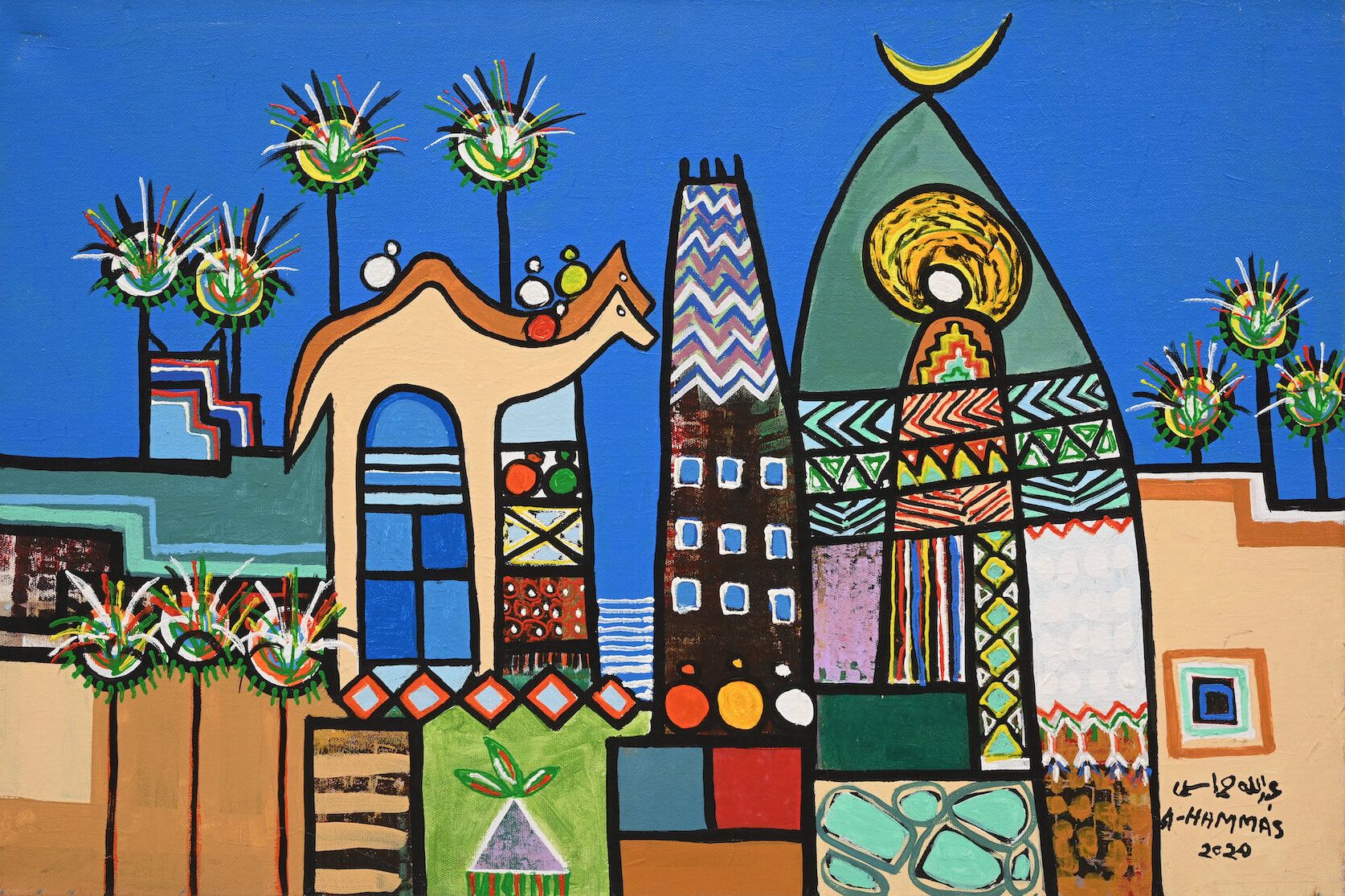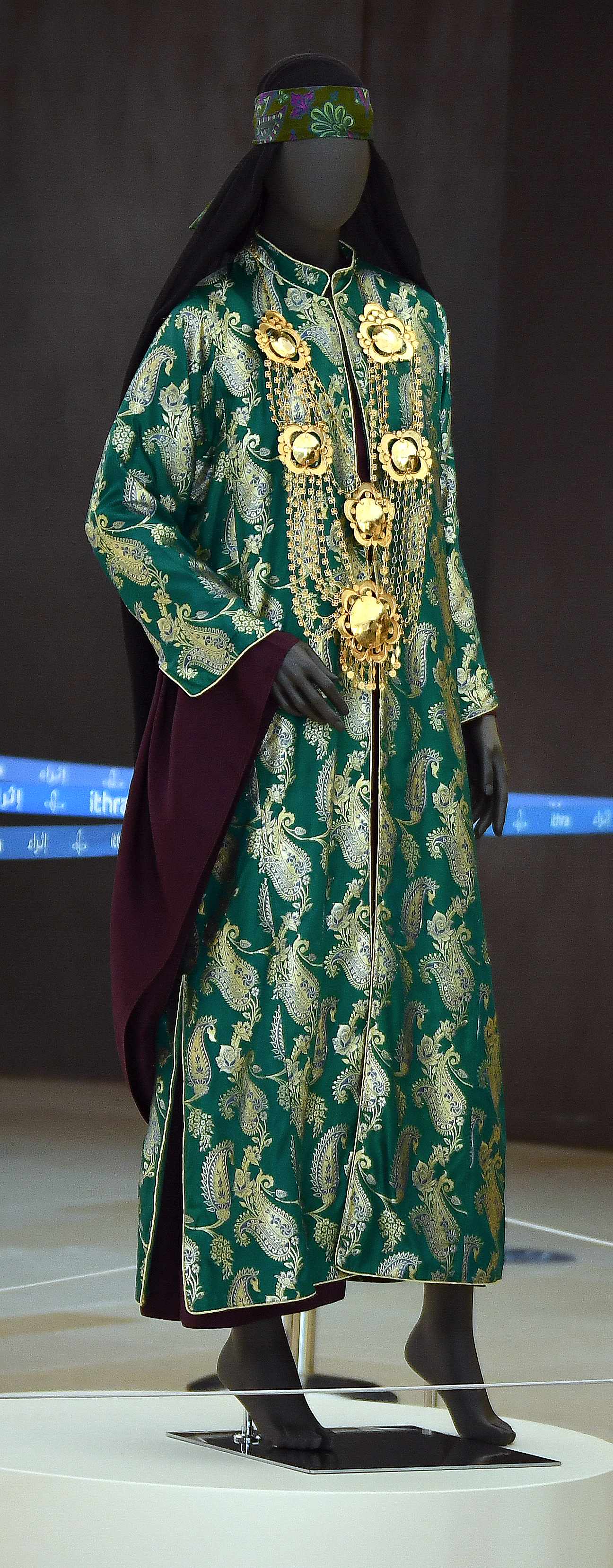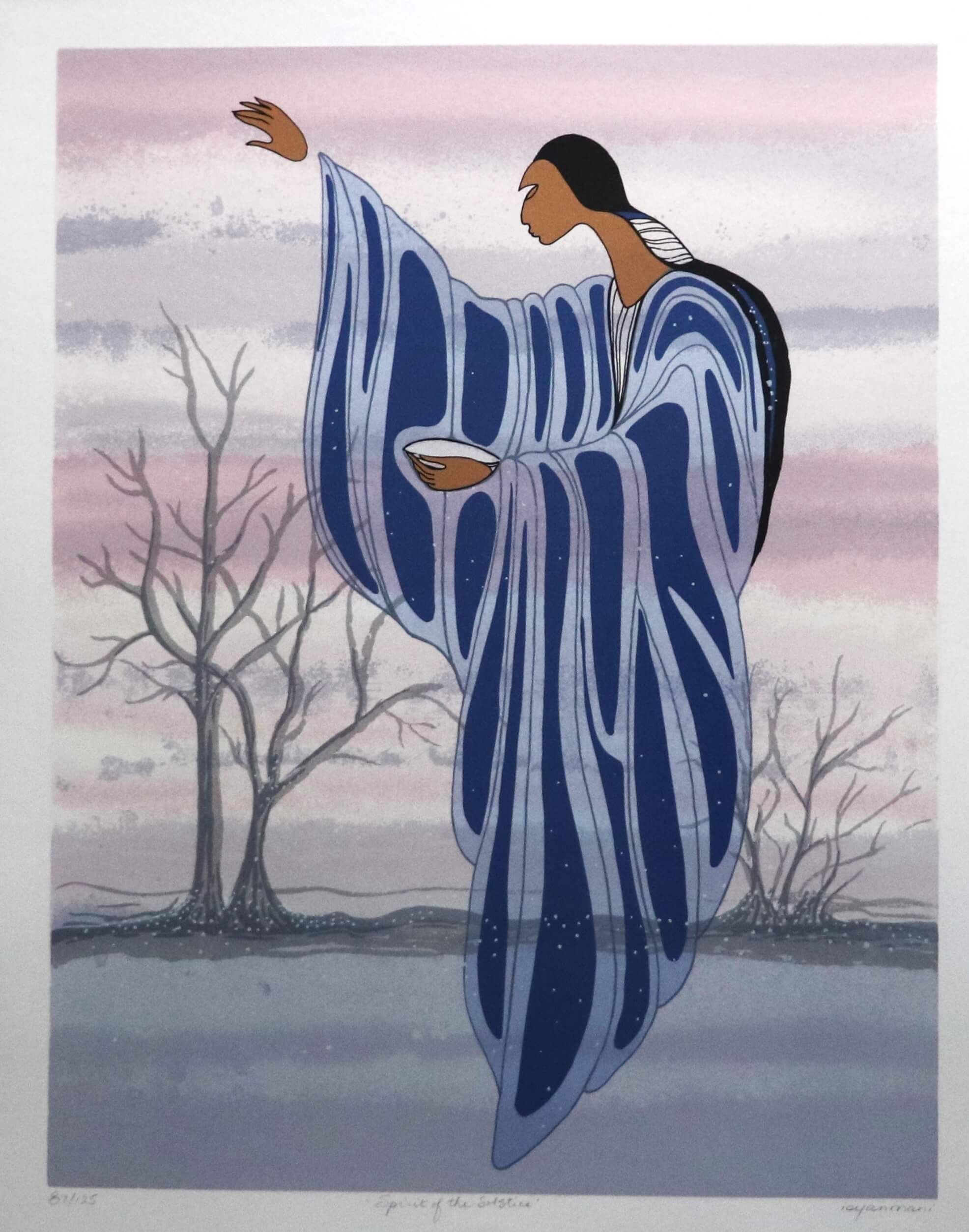A Homage to an Ever-evolving Art of Storytelling
The first published edition of the 70-year-old Al-Qafilah Magazine - dated October 1953. Story of the Cover: “Water is indeed one of the most important commodities for the oil exploration teams in the desert, with essential massive water container trucks coming in, such as this one here driven by Abdulaziz bin Shaiban, who has been with the company for over 11 years.”
Dhahran - With the publication of this 700th issue, Al-Qafilah completes 70 years of its eventful life. Here, we must recall what its first editor-in-chief, the late Hafez Al-Baroudi, wrote in the introduction to the very first issue in October 1953: “In the name of Allah, we release the first issue of (The Oil Caravan/Qafilah), and with His help we will continue to publish future issues. The management of this publication hopes to present to its readers, the company’s employees, every single delightful, interesting, and useful nugget of information possible. We hope that this project will be of great benefit and lasting impact in spreading knowledge, and we will make every effort possible to provide food for thought to satisfy both intellectuals and general readers alike.
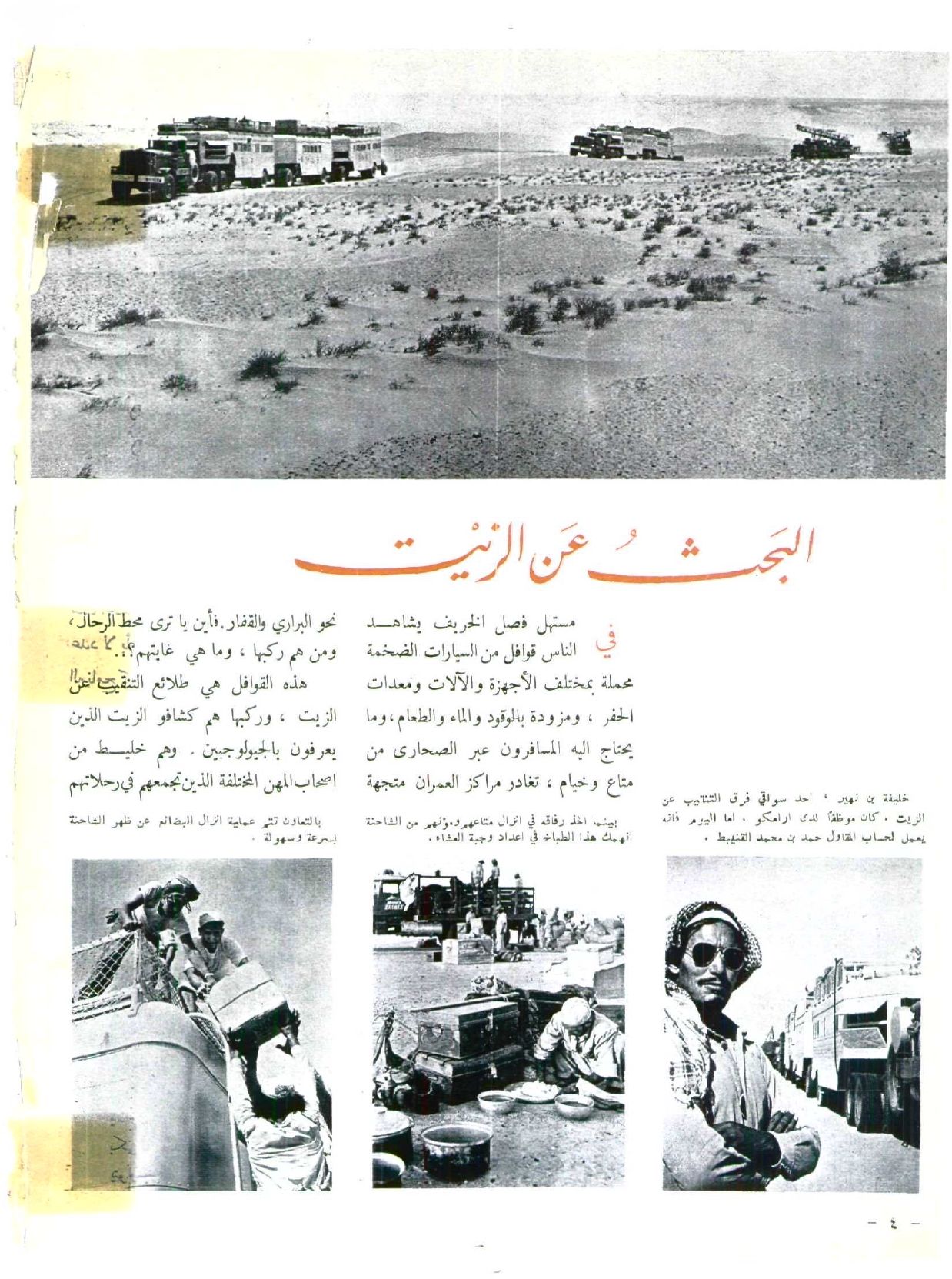
Article from the inaugural issue of Qafilah, discussing the convoys of people, vehicles (Oil Caravans) and equipment in the continuing search for oil.
It is necessary to pay tribute and respect to the previous founders within the Aramco team, who launched Qafilah to reach its 700th issue, including directors and editors-in-chief; the members of the editorial board and its secretariat; the multitudinous writers and freelancers who contributed their articles; those who helped to design, print and distribute the magazine; and most of all, the generations of readers and participants.
Looking at the issues of Qafilah over the years, you will notice that it is characterized by continuity and change at the same time and that it has both enriched and been influenced by its regional context. It is as much an annotative witness to its era as it is an exceptional Saudi legacy that has watched and documented the development of the Kingdom over seven decades. It is enough for it to be proud that it has lived through all seven Kings of the Kingdom of Saudi Arabia, since the era of the founding King Abdulaziz bin Abdulrahman Al Saud, through the eras of his sons Kings Saud, Faisal, Khalid, Fahd, and Abdullah, and up to the prosperous era in which we live under the leadership of King Salman and his Crown Prince, Prince Mohammed bin Salman.
which coincided with the establishment of the first Council of Ministers in the Kingdom. At that time, television was not yet available in the region, and radio access was limited, giving the Arab printing press its own particular presence and influence. Qafilah was the first-ever Arabic publication in the Eastern Province of Saudi Arabia. If Qafilah had been a person, we would have found that her features grew and changed with the passage of time. During Qafilah’s childhood, from 1 to 6 years old, its pages were monochrome and not in color, and its cover was printed in black, with a single supplementary color.
Qafilah then entered her prodigious early youth, from the ages of 7 to 22. Readers grew attached as she achieved national fame and renown in the Arab World and published the writings of prominent Saudi and Arab intellectual figures. One of the highlights at this stage was the young magazine’s namesake child (of sorts), which came in the form of an internal weekly publication dedicated to Aramco-specific news. This continued separately from the monthly magazine, which allowed the magazine to publish more cultural and scientific content. This stage also witnessed the addition of more colors to the cover, whilst the interior pictures continued in black and white. In my opinion, this time was one of the brightest and golden ages of the magazine.
When beautiful Al-Qafilah became 23 years old, and up until her early forties, significant developments in the Saudi and Arab print media and a group of modern magazines were published. The media arena was no longer limited but rather became more fertile with the intense competition to capture the attention of readers. Al-Qafilah’s internal pages became colorful with pictures and designs and had many excellent feature stories about Saudi and Arabian cities, and it was distinguished by its reporting of the economic boom that occurred in the seventies. Around her 40th birthday, Al-Qafilah and the print press witnessed a greater challenge with the increasing prevalence of satellite channels and the emergence of the internet. This was akin to a mid-life crisis for the magazine, and what is remembered from this stage for Al-Qafilah is that it embraced in its look and feel the Aramco’s new visual identity that was launched in 2000.
But this crisis did not last, and Al-Qafilah would soon receive a boost to serve as a renewal of its youth for the next two decades. I remember the former president of the company, Abdullah Jum'ah, taking swathes of his valuable time to develop a totally new vision for its development, which he formulated in 5 pages. These ideas were the impetus that brought youth back to it, and its editorial team, in cooperation with the “AlMohtraf” team, was able to restore its distinction and achieve a second golden age for it.
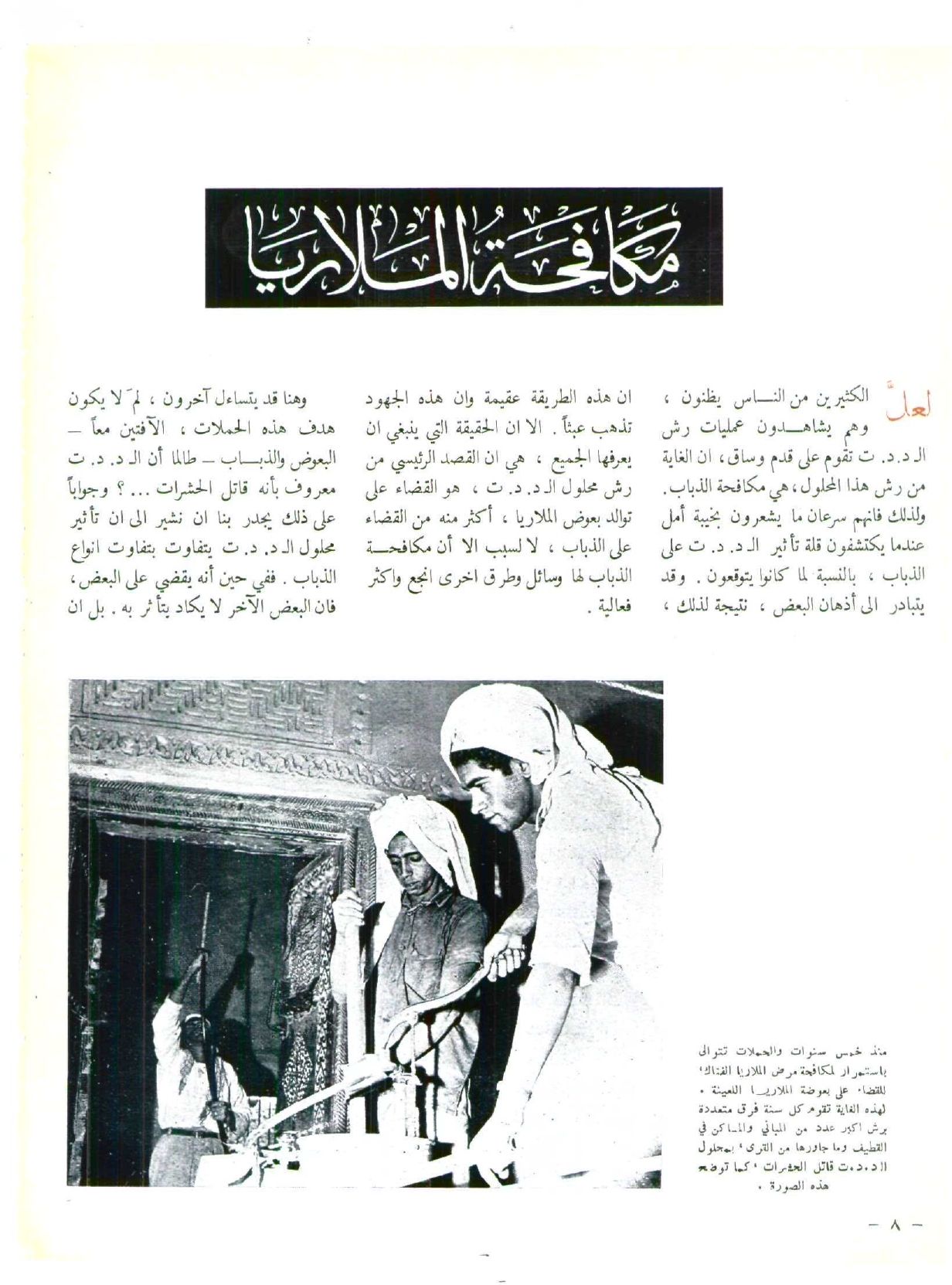
Article from the inaugural issue of Al-Qafilah, talking about the use of pesticides to combat malaria in the region.
When it reached the age of 60, retirement and rest came to its mind, especially with the advent of the smartphone, social media, and modern digital media trends, all of which were taking shape and attracting readers. With them, a real threat began to form for all magazines and printing presses globally, many of which did not survive, but Qafilah magazine survived and increased its growth through its digital presence and supporting products.
It held seminars and workshops in several cities in the Kingdom to discuss topics that would enrich its content and connect it more closely with society. Qafilah also went digital, launching its website and social media, and cooperated with Al Arabiya to publish part of its content in the form of inspiring articles and short clips. It launched the Qafilah podcast, which achieved remarkable success, and it established a cooperative project with the King Abdulaziz Centre for World Culture (Ithra) to translate the ancient Arabic poem “Muallaqat” into English. This period coincided with the launch of Saudi Vision 2030, which set forth transformations to unleash all facets of the Saudi cultural giant.
particularly now that it has reached a milestone 70 years old. To answer this question, Aramco formed an advisory committee for the magazine during the third quarter of 2023, to stimulate its journey into the future with beauty and impact. The first meeting of the advisory body, which I had the honour to chair, was held last August, and I would like to share with readers some highlights.
The committee members’ unanimously agreed that the magazine be considered a national cultural asset and that its name, brand, and pioneering role in Saudi society should be built upon as one of the oldest magazines of influence in the Kingdom. They also agreed that it is necessary for it to start a transformative journey by adopting a forward-thinking strategy based on four drivers: the first, Aramco’s own transformation and the global expansion of its activities, including integrating the cultural magazine with the “Ithra” Centre; secondly, the Kingdom’s emergent alignments with Vision 2030; third, the developments that the world is witnessing in the fields of digital technology, cultural issues globally, geopolitics and economics; and finally, the rapid transformations of the media sector, which is veering deeper into digital and social media. The members also agreed that it must align with the expectations of the public and the new generation of readers.
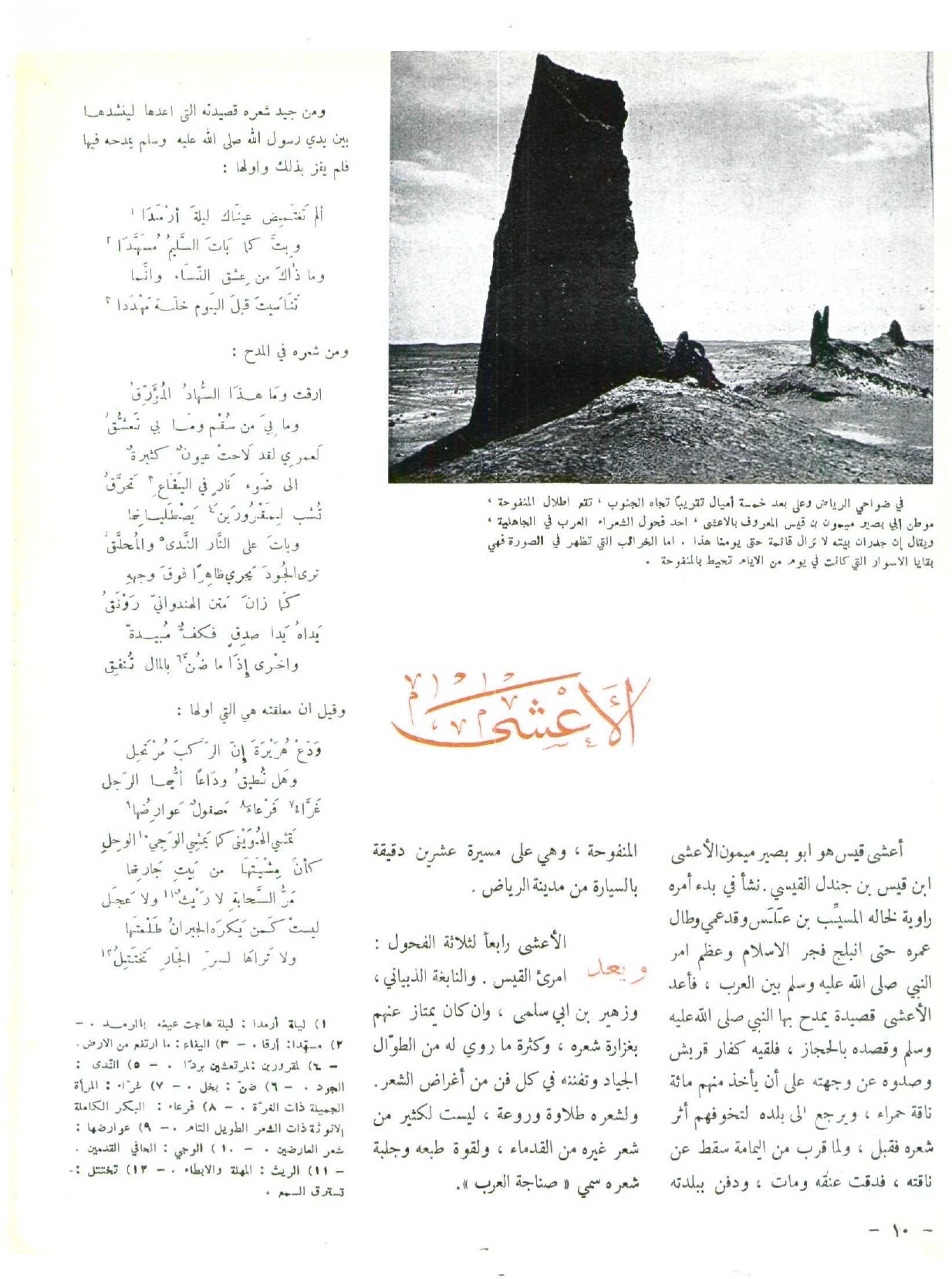
Article from the inaugural issue of Al-Qafilah, discussing the pre-Islamic Arabic poet, Al-A'sha, and sharing some of his poetry.
Therefore, the Advisory Committee considered it vitally important to focus on evolving the magazine into an integrated cultural project with both print and digital versions and supporting products and events. One of the most pivotal features of the future is the digital transformation from an essentially paper magazine to an integrated platform for culture by employing appropriate marketing tools, leveraging the potential of artificial intelligence, and benefiting from the capabilities and technologies available to the magazine’s media partner ‘Rawnaa,' whilst not doing away with tangible, paper issues given their significance in both the present and the future.
The editorial board did not consider dedicating the entire seventieth issue to reviewing the historical journey of the magazine, and so this has been postponed to a larger occasion in the future, such as the diamond celebration of the magazine’s 75th anniversary, which will take place in 2028.
It is truly distressing that this issue is being published at a time when Palestine, the primordial Arab cause, is experiencing one of its most extreme nightmares of brutality.
We pray to Allah to grant security and peace to Palestinians and that their rights will soon be restored to them.
Over the past seventy years, the cover has been decorated three times with Holy Jerusalem and Palestine, and Al-Qafilah’s pages have included many topics detailing their history, culture, arts, and firm place in our hearts.
These were opportunities for the Qafilah family to express their sincere gratitude to its creative Palestinian writers, both living and departed, who have enriched the magazine with their thoughts and research and the breadth of their inspiring creativity along the way.
Looking at the content of this issue, the reader will find that its central focus is on Saudi culture.
Since its inception, this magazine has sought to accurately capture and portray the cultural,
historical and literary aspects of the Kingdom.
As its editor-in-charge, Maytham Al-Moussawi stated that it was, and still is, a Saudi Arabian cultural yield par excellence.
One of the most noteworthy articles in this issue explains the global challenge that all countries and institutions face in transitioning to low-carbon energy. The publication of this article coincides with the escalation of regional and global discussions in the final quarter of 2023, including the Climate Week conference for the Middle East and North Africa being hosted in Riyadh in preparation for the COP28 climate summit in the United Arab Emirates. I will not prolong your kind review of the articles enclosed in this issue and will conclude with a verse of poetry through which I gently confess my admiration for the enchanting Al-Qafilah:
If passion in the heart could be counted, that in mine would set all records.
